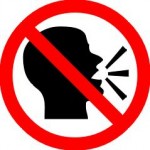 My father’s strong suit was never business but he had remarkable people skills. When he walked into a room, strangers would instantly be drawn to him. A true people person, my father, Suey, remembered names, family stories and some detail he could use to start a personal conversation.
My father’s strong suit was never business but he had remarkable people skills. When he walked into a room, strangers would instantly be drawn to him. A true people person, my father, Suey, remembered names, family stories and some detail he could use to start a personal conversation.
Being a sole proprietor can be a lonely existence sometimes. He compensated for this by being active in the Rotary, American Legion, Kiwanis and in the Chinese-American Community.
These are the critical people skills that I learned from this wonderful man:
– Always be the first to greet someone, never wait for him/her to come to you.
– Establish eye contact instantly.
– Never be stingy with smiles. Make them great and flash them often.
– Always repeat a name. This helps ensure it’s pronounced correctly and that it stays in memory.
– Take on responsibilities in organizations. It’s a great way to meet folks and become engaged.
Today, when I am in a room full of strangers and especially when I am going to present, I try and introduce myself to as many people as possible.
When I greet someone, I remember my father because it brings a smile to my face which helps me be fully present with that person.
 l times, when projects do not go smoothly, someone may get thrown under the bus. If you happen to be this person, here are some critical tips to ensure that it does not turn fatal:
l times, when projects do not go smoothly, someone may get thrown under the bus. If you happen to be this person, here are some critical tips to ensure that it does not turn fatal:












